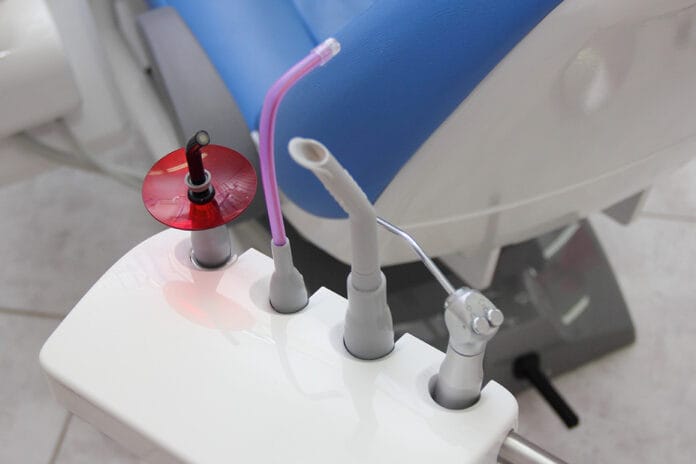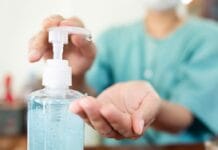Many of us drink through a straw. When you take a long, delicious slurp, have you ever noticed that, once you release your lips from the straw, that the remaining liquid trapped inside the cylinder tubing backflows into the cup in which it rests? I have witnessed the process multiple times and even watched my children play insipidly with straws.
Fascinatingly enough, it never dawned on me that this is exactly the same process used by a saliva ejector. In fact, the saliva ejector is often deemed “slurpy straw” by many dental professionals during explanations to pediatric patients. This is more of a perfect analogy than we realize. Not only does the apparatus resemble a straw in appearance, it also resembles one in functionality.
Who Knew About the Backwash?
If I am being shamefully honest, I do not recall ever being told to not allow patients to close on the saliva ejector while I persistently attempt to remove debris and create a cleaner, drier field during my daily feats as a dental hygienist. While some of you may gasp at this revelation, others are shaking their heads as they can relate. It wasn’t until later in my career that I stumbled upon this important and stunning information ─ thanks to the evolution of the internet.
I was stunned and shocked that this recommendation was not new but in fact has been studied as early as 1993 by the University of Alberta. In 1998, the University of Montreal performed studies that concluded backflow occurs in saliva ejectors with approximately 20% to 25% of patients.1 In other words, one in five patients may receive the backwash of bacteria and blood from the prior patient when asked to close on the saliva ejector.1
The Centers for Disease Control (CDC) along with the American Dental Association (ADA), urge dental practitioners to not allow the patient to close around the saliva ejector despite how learned the behavior is. They list three factors that can contribute to backflow:2,5
- When the pressure in the patient’s mouth is lower than the pressure in the evacuator.
- When the tubing connected to the evacuator is placed above the patient’s mouth, the pull of gravity will pull fluid towards the patient’s mouth.
- When the saliva ejector is used in conjunction with the high-volume evacuator (HVE).
Dental waterlines and evacuation tubing contain biofilms, or a slimy, sticky film full of bacteria. The studies found that the bacteria found in the tubing were mostly metabolically active.4 Every evacuation unit comes with its own manufacturing suggested maintenance instructions that should be followed.
Nonetheless, these lines should be cleaned routinely to assist in prevention control and reduce bacteria count. Dental lines are small in circumference and lay stagnant between patients and on weekends creating an environment for bacteria to grow. Proper evacuation care will assist in the reduction of evacuation hose buildup.
Dismantle or Consider Disposables
According to the manufacturer’s instructions, dental offices should dismantle the HVE and saliva ejector routinely for inspection and cleaning. Some valve bodies are autoclavable. It is important to remove, inspect, lubricate, and/or replace any damaged O- rings during the dismantling process. This process helps maintain a proper seal.
Most units have disposable screens that should be replaced routinely to assist in the proper maintenance and flow of the evacuator. The dental trap should also be changed routinely to assist in the flow of the dental evacuation unit.
This time-consuming ─ not to mention vile ─ process of valve dismantling/disinfection can be eliminated altogether by using disposable products. Many items in dentistry have transitioned into single-use products, therefore making perfect sense that this has become an option in eliminating backflow.
Currently, the market offers two variations in disposable backflow products. One product replaces the metal valve on the evacuation tubing. The other product is a modification of the existing attachments. The valve replacement eliminates the need for O-rings, therefore extinguishing the issue of leaky valves. If the practitioner prefers to keep and maintain their metal valve, modified attachments are available that contain a one-way backflow prevention barrier for both saliva ejectors and HVE systems.
Replacing the metal valve eliminates the entire process of dismantling and cleaning. However, it does increase the amount of plastic waste that is disposed of after each appointment. According to the Eco-Dentistry Association, dental waste is a significant contributor to the environmental problems stemming from single-use plastic products.6
In some locations, water regulators require backflow system installations either on individual dental units or at the service connection to prevent the backward siphoning of contaminated fluid into the public water supply.3
A simple motion of closing the lips around a dental suction can create such strife and essentially encourages cross-contamination with infectious material. Dental clinicians can further assist in the health of their patients by altering their routines and educating patients on proper and safe appointment behavior. By choosing to install or use a backflow prevention device, dental professionals can proceed as normal and rest easy when their patients slurp the straw.
Before you leave, check out the Today’s RDH self-study CE courses. All courses are peer-reviewed and non-sponsored to focus solely on high-quality education. Click here now.
Listen to the Today’s RDH Dental Hygiene Podcast Below:
References
- Mann, G.L., Campbell, T.L., Crawford, J.J. Backflow in Low-volume Suction Lines: The Impact of Pressure Changes. J Am Dent Assoc. 1996; 127: 611-615.
- Saliva Ejector & Backflow. (2016, March 3). Centers for Disease Control and Prevention. Retrieved from https://www.cdc.gov/oralhealth/infectioncontrol/faqs/saliva.html
- FAQS Instruments and Equipment. (2018). Organization for Safety Asepsis and Prevention (OSAP). Retrieved from https://www.osap.org/page/FAQIE20187
- Barbeau, J., ten Bokum, L., Gauthier, C., Prévost, A.P. Cross-contamination Potential of Saliva Ejectors Used in Dentistry. J Hosp Infect. 1998 Dec; 40(4): 303-11. doi: 10.1016/s0195-6701(98)90308-5. PMID: 9868623.
- Kohn, W.G., Collins, A.S., Cleveland, J.L., Harte, J.A., Eklund, K.J., Malvitz, D.M. Guidelines for Infection Control in Dental Health-Care Settings – 2003. Centers for Disease Control and Prevention. MMWR 2003; 52 (Report No. 17). Retrieved from http://www.cdc.gov/mmwr/PDF/rr/rr5217.pdf
- Dental Office Waste. (n.d.). Eco-Dentistry Association. Retrieved from https://ecodentistry.org/green-dental-professionals/dental-office-waste/












